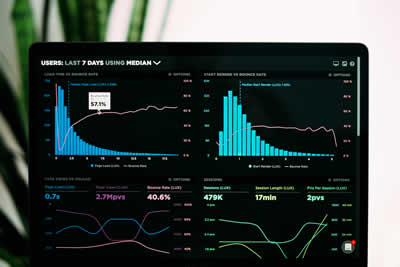Managing IT isn’t just about fixing things when they break - it’s about creating systems that prevent problems, track resources, and optimize processes. That’s where ITSM and ITAM come in. These two disciplines are widely considered to be the pillars of modern IT, and while they sound similar, their roles are radically different. So if you're looking to sharpen your organization’s digital edge, understanding the distinction between IT Service Management (ITSM) and IT Asset Management (ITAM) is the place to start.

So let’s clear up the confusion!
The Core Distinction: Services vs Assets
Think of your IT environment like a well-run city. ITSM is the team that ensures the buses run on time, the roads are clear, and the power grid works—it's about delivering reliable services to people. ITAM, on the other hand, is responsible for tracking every car, building, and tool in that city—it’s about knowing what you own, where it is, and how it’s being used.
ITSM (IT Service Management) is all about the design, delivery, and support of IT services. It's process-driven, with frameworks like ITIL guiding the way. It’s concerend with end-user satisfaction, minimizing downtime, and ensuring continuous operations.
ITAM (IT Asset Management), on the other hand, is focused on the lifecycle of assets. That’s hardware, software, licenses, cloud subscriptions, and even digital infrastructure. Its “mission” is to maximize the value of investments in IT while staying compliant and cost-efficient.
Why they are often confused (but shouldn’t be)
The overlap lies in how services depend on assets to function. For example, an employee can't access a helpdesk system (an ITSM service) without a functioning computer and licensed software (assets managed under ITAM). That interdependency makes some companies blur the lines, treating asset management as just another part of service management.

But here’s the catch! Treating ITAM as a sidekick to ITSM means missing out on huge optimization opportunities. While they should work together, they need their own strategies, tools, and metrics. Merging them too tightly can create blind spots in compliance, security, and budgeting.
How they complement each other in practice
The real magic happens when they are synchronized. Imagine a service desk that not only resolves user issues but instantly pulls up asset history, warranty details, and software usage stats. That’s when incidents are resolved faster, assets are used smarter, and support becomes predictive instead of reactive.
Here’s how these two functions support each other:
Function |
ITSM Focus |
ITAM Focus |
Primary Goal |
Delivering quality IT services |
Tracking and optimizing IT assets |
Key Activities |
Incident, request, change, and problem management |
Asset discovery, lifecycle management, license compliance |
Metrics |
SLAs, CSAT, resolution time |
Asset utilization, cost savings, audits |
Tools |
Service desk platforms, workflows |
CMDBs, discovery tools, procurement systems |
Users |
End-users, service agents |
Procurement, finance, compliance officers |
Use Case Example: Onboarding A New Employee
When onboarding a new team member, ITSM kicks off the process: setting up accounts, provisioning email, and configuring access. ITAM ensures the right laptop is allocated, a valid license is available for essential tools, and records are updated for future audits. If the two systems don’t talk to each other, delays and mistakes become inevitable.
Choosing the right platform: integration is key
Whether you're running a startup or a giant enterprise, the biggest win comes from integrating ITSM and ITAM within the same environment. It reduces redundancy, enables smarter decisions, and creates a flexible IT environment that’s able to scale. A great example is
this comprehensive solution that unifies service management and asset tracking in one platform – making sure that IT teams are in control without drowning in complexity.

When ITSM outpaces ITAM: the hidden costs
Many businesses prioritize service desk performance while leaving asset management as a back-office task. But what happens when you don’t know how many software licenses you're using - or worse, how many you're paying for but not using? Or when you can’t track which laptops are due for replacement?
That’s money walking out the door. Worse, it exposes your organization to audit failures, shadow IT, and compliance risks. A robust ITAM strategy can prevent these surprises and deliver measurable ROI, especially when used in tandem with a modern ITSM system.
How to know if your company needs to separate them
If your support team struggles to locate hardware or confirm license availability when resolving tickets, your ITSM is operating in the dark. If finance teams can’t reconcile IT spending with actual asset usage, your ITAM is missing the service context. These signs suggest that your organization has blurred the boundaries too much—and it’s time to untangle them.
Top signs you need to mature your ITSM and ITAM strategies:
- You rely on spreadsheets to track assets
- Employees report service issues involving unknown or untagged devices
- License audits are chaotic and last-minute
- Onboarding or offboarding involves multiple emails and delays
- There's no clear data on total cost of ownership (TCO) for IT resources

Final Thoughts: Better Together, Not Interchangeable
ITSM and ITAM are like two gears in the same machine. One drives service excellence, the other ensures efficient resource use. Both are essential—and both need the right tools, data, and processes to thrive. Treating them as equals, but not as twins, is the secret to building a resilient, transparent, and future-ready IT ecosystem.
In the ever-evolving world of technology, those who master both service and asset management don't just keep up - they lead. So take a closer look at how you handle them both. You might just uncover the key to your next big breakthrough…

If you'd like to learn more about what we provide, why not take a look at how we can help?
Boost your skills with our market-leading online courses at super-low prices.





























